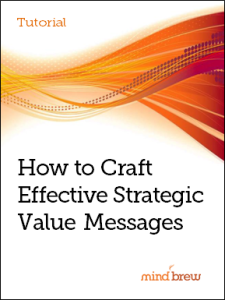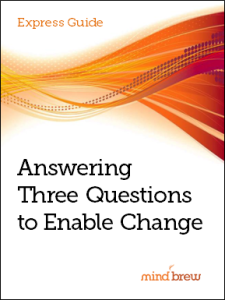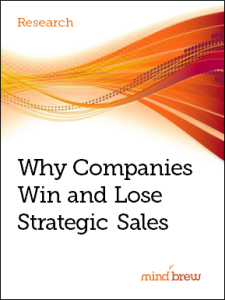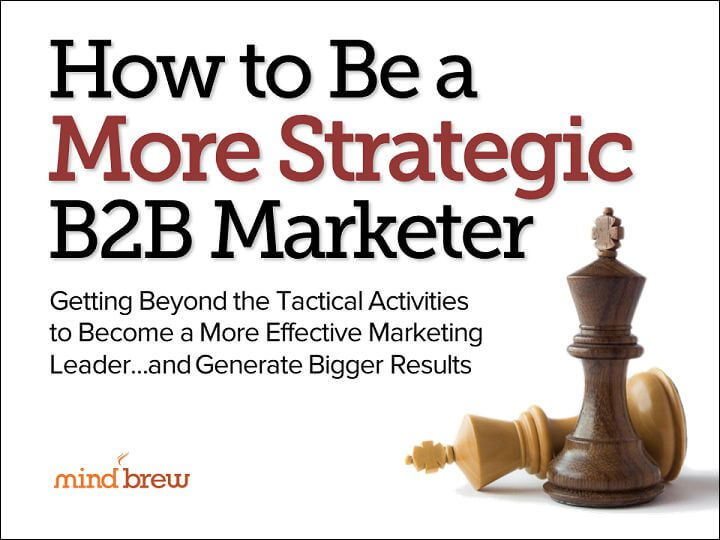If people read your marketing materials, will they understand what you sell? More importantly, when people read your marketing messages, will they understand why they need what you sell and be moved to purchase?
All too often, marketing teams focus so intently on creating good feelings with their words that they fail to truly convey what the organization is all about. Here’s an example:
“Our purpose goes beyond what we sell. We’re using our reach to be a positive force. For our customers. Our people. Our communities. Our world.”
What do you think that company sells? Could it be software? Could it be clothing? Is it maybe advertising Goodwill thrift stores?
Would you believe that this company sells hamburgers? In fact, you have almost certainly eaten at this establishment, and in the past, their advertising materials have been some of the best ever created. But this “ambition statement” on their website feels a little lacking. They certainly aren’t conveying that they sell inexpensive food that will make you feel good.
Here’s another example from a less-well-known organization:
“A shared passion for innovation, our global team offers real-world insight and information that sheds new light on your complex challenges.”
Any idea what that company offers? Sure, it’s great that they are global and are going to help people with their “complex challenges,” but what kind of challenges are those? Accounting challenges? Legal challenges? Hiring challenges? There’s just no way to know.
People who go into marketing tend to be high-minded visionaries. They’re creative, even artsy. They value inspirational design and messages. They know it’s important to get along with people, and they’re usually pretty fun.
All of those attributes are really valuable, but they don’t necessarily help you create effective marketing messages.
These days it’s become all too common for marketing messages to be so high-minded and inspirational that no one knows what they are selling or how they should respond. Worse yet, other messages have obviously been drafted by committees where each person has contributed a platitude that makes them feel good. No one on the internal team wanted to offend anyone or belittle their contribution, so everyone’s contribution has been accepted—leading to a bunch of indecipherable gobbledy-gook.
And some messages consist entirely of buzzwords that have become so commonplace that no one knows what they mean anymore. The first marketing person who said, “We don’t sell products, we sell solutions,” might have been on to something. When every single B2B firm in existence claims to sell “solutions,” the word ceases to have its original meaning.
So how do you avoid letting platitudes and buzzwords creep into your marketing?
The secret lies in understanding your customers so well that you can see with their eyes. You need to know what is truly important to them. Before you publish any marketing message, take a look at it from your customers’ point of view. It should make clear what you are selling, why it’s better than the alternatives, and what the customer should do as a result.
There’s no shame in selling products and services. You shouldn’t feel obligated to obscure the selling process with a lot of meaningless drivel. You probably work where you work, at least in part, because you believe that what your company has to offer can make people’s lives better. So go ahead and make their lives better by actually selling them something useful.
Crafting effective marketing messages is hard—but it’s also essential if you want your marketing to be successful. We have a couple of resources that can help: The Creating Compelling Content webinar cuts through all the hype around “content marketing” to help B2B marketing teams create materials that help accomplish real business objectives, and the How to Craft Effective Strategic Value Messages tutorial explains how to express the value you offer to customers clearly and persuasively.
It’s all well and good to inspire your customers. But it’s more beneficial to them if you inspire them to purchase something that will make their lives better or their businesses more successful—and that’s what good marketing communication is really all about.
Creating Content That Actually Works

While every marketing pundit and publication is fueling the hype around content marketing, the hypesters are omitting some important facts and glossing-over some crucial processes. In this on-demand training webinar, you’ll learn about ten proven strategies for creating more effective sales and marketing content.







